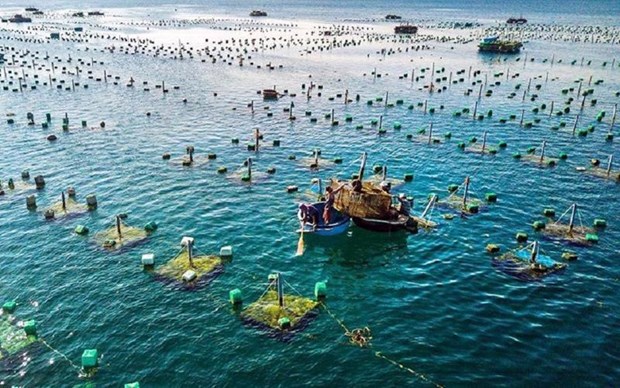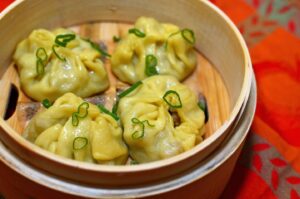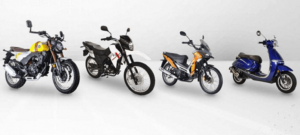
Vietnam’s seafood export volume growth in recent years has been built on the foundation of the farming, exploitation and processing aquaculture industry.
The Vietnamese aquaculture industry has not only served the sizeable domestic market, with a population of about 100 million, but has also gradually conquered the global market, said Truong Dinh Hoe, Secretary General of the Vietnamese Association of Exporters and Producers of Products. del Mar (VASEP).
Hoe noted that along with the growth of global consumption demand for seafood, Vietnam’s export turnover of aquaculture products has maintained growth for many years and will reach $11 billion in 2022, 12 times more than in 1998.
In addition to growing in production, Vietnamese aquaculture products are also considered a source of protein with stable quality and increasingly high nutritional value, helping to ensure food supply to people around the world. Currently, Vietnam is the world’s third largest exporter of seafood, after China and Norway.
The Vietnamese fishing industry now has advantages. Firstly, seafood consumption is increasing worldwide, while natural aquatic resources are limited and seafood supply must depend on aquaculture activities. Vietnam has the advantage of having a long coastline and sufficient water surface to develop both brackish and freshwater aquaculture. Of the total world shrimp production, about 6 million tons per year, Vietnam contributes about 1 million tons.
Vietnam’s export turnover of aquaculture products has maintained growth for many years and will reach $11 billion in 2022, 12 times more than in 1998
The second advantage is that Vietnamese companies can catch up with the world in transformation technology, especially deep transformation to make value-added products.
Third, Vietnam has been widely and deeply integrated into the global economy by signing and implementing new generation free trade agreements (FTAs) with countries and regions that are large consumer markets.

However, the Vietnamese fishing sector faces disadvantages such as small-scale, mostly domestic production and the negative effects of climate change, which cause the reduction of freshwater aquaculture areas, Hoe explained.
He added that Vietnam has strengths in processing technology and consumer markets.
The question your aquaculture sector must now address is how to optimize production costs by minimizing input costs.
Long-term solutions are also needed, such as gradually increasing the rate of large-scale production, applying high technology to improve productivity, and attracting investments in local feed and breed production to reduce their dependence on imported sources.
The second advantage is that Vietnamese companies can catch up with the world in transformation technology, especially deep transformation to make value-added products.
Hoe noted that Vietnamese aquaculture products are present in more than 170 countries and territories around the world, so finding new markets is no longer a priority.
In a context of declining purchasing power in the main markets, companies and associations must intensify commercial promotion to effectively exploit the potential of each market.
Regarding the growing trend of green production and consumption, the VASEP representative stated that the Vietnamese fishing industry is “going green” quite well.
Up to 70% of the raw materials used to make products for export are raised on farms. Vietnam has more and more farms and farming areas that have received international certifications for growing aquatic products responsibly, minimizing negative impact on the environment, ecosystem and community, and complying with labor regulations.
Of the 847 industrial-scale factories with food safety certificates, more than 690 received codes to export products to the EU. For the US market, Vietnamese products also comply with Best Aquaculture Practices (BAP).
As Vietnam has committed to achieving net-zero emissions by 2050, it is time for all industries and companies to take action, such as using energy-efficient equipment, renewable energy and low-carbon packaging.
Article republished from the Vietnamese state media VNA within the framework of an agreement between both parties to share content. Link to the original article: https://en.vietnamplus.vn/vietnam-s-aquaculture-top-position-on-world-map/268420.vnp

Vietnam News Agency (VNA) is a state news organization that publishes, disseminates official information, and collects and provides news through various forms of multimedia content for domestic and foreign media agencies.
The VNA operates under a consortium model with 15 news units for domestic and foreign service and representative offices in all 63 cities and provinces nationwide and 30 foreign offices on five continents.
VNA and ReporteAsia have an agreement for content exchange and republication
Source: https://reporteasia.com/economia/industria/2023/09/25/acuicultura-vietnamita-primer-puesto-mundial/

